最新の USB-C ケーブルは 240W のデバイスに電力を供給できることをご存知ですか? 地元の店で USB-C ケーブルを購入するのは、選択肢が多く、すべての USB-C ケーブルが同じではないため、難しい場合があります。新しいバージョンは下位互換性がありますが、電力供給 (PD) 専用の USB-C ケーブルを見ると混乱するかもしれません。覚えておいてください! すべての PD ケーブルがデータ専用というわけではありません。多くの USB-C PDケーブル 電力とデータの両方の伝送をサポートできますが、データ転送機能がない電力のみのケーブルもあります。
USB-C ケーブルのプロになり、友達に自慢できるような複雑な詳細をすべて学びたいなら、このガイドが最適です。USB-IF の信頼できるソースから得た情報に基づいて、より高度な USB-C 機能の基本を説明します。
目次
USB-C 規格を保証するのは誰ですか?
標準を維持し、認証を提供し、技術を推進し、準拠した製品を生産するためのライセンスを保証する組織が必要な場合は、 USB-IF (USB Implementers Forum)。1995 年に設立され、USB テクノロジの主要プレーヤーです。USB-IF は複数の組織と連携する非営利団体で、著名なメンバーには Apple Inc.、HP、Intel、Renesas、STMicroelectronics、Texas Instruments などがあります。
USB-Cケーブルの見分け方
充電器、コンピューター、スマートフォン、タブレット、またはその他のデバイスに接続するケーブルのコネクタはポートと呼ばれます。USB-C には、どの方向からでも接続できる独特の楕円形のコネクタがあり、リバーシブルと呼ばれることもあります。ケーブルの一方の端には USB-A コネクタがあり、もう一方の端には USB-C コネクタがあります。最新の USB-C ケーブルには、両端に USB-C タイプのコネクタがあります。

USB-Cケーブルの種類と機能

USB-IF は、USB-C ケーブルの規格を管理する役割を担っています。規格に従って、USB-C の機能とタイプは目的によって分けられます。ビデオ、オーディオ、電源、データ転送をサポートできるケーブルもあれば、充電専用のケーブルもあります。さっそく見ていきましょう。
データケーブル
USB-C ケーブルは、当初はデータ ケーブルとして開発されました。その目的は、堅牢なリバーシブル コネクタを使用して、複数のデバイス間でデータを簡単に共有できるようにすることでした。USB-C データ ケーブルにはさまざまな種類があり、ピンやワイヤの数など、重要な詳細が異なります。USB-C ケーブルの購入を検討しているユーザーであれば、必要な最低限の知識があれば、バージョン間の違いを見分けることができます。ほとんどの場合、USB-C データ ケーブルのパッケージに記載されている内容を信頼する必要があります。
USB-C データ ケーブルには、ビデオ伝送をサポートできるバージョンがあります。最新の USB-C ケーブルは、DisplayPort、MHL、HDMI (Thunderbolt 3 および 4 のみ) などのプロトコルをサポートできます。グラフィック カードと USB-C ポート接続を備えたモニターがある場合は、USB-C データ ケーブルを使用してそれらの接続を確立できます。モニターは、ハードウェアがサポートするバージョンに応じて、HDMI および DisplayPort プロトコルで動作します。USB ケーブルには、USB4.0 V2.0 や USB2.0 などのバージョンがあります。ただし、データ ケーブルと転送速度については、この記事の次のセクションで詳しく説明します。
電源専用ケーブル

リバーシブル USB-C ケーブルは、現在、最大 240W の電力をサポートできます。USB-IF はこれらのケーブルを標準化し、さまざまな方法で信頼性を確保しています。USB-C ケーブルにはバージョンがあり、最も初期の USB 2.0 バージョンでは 2.5W の電力しか供給できませんでした。各 USB バージョンには異なるピン数があり、異なる電力を供給できます。最新の USB PD シリーズの電源ケーブルは、電力のみを供給でき、データは供給できません。
USB-IF の最新の Power Delivery 3.1 Type-C ケーブルは、240W という膨大な電力を供給できます。ケーブルはデバイスと通信し、サポートされている電圧や電流などのデータを交換できます。デバイスは、現在の状態に基づいて電力要件を送信します。USB 標準充電器は、デバイスの温度、バッテリーの状態、その他の側面に基づいて電力供給を開始し、電圧とアンペアを変更できます。非標準の USB-C ケーブルではこれらの手順を実行できないため、不安定になったり、充電が遅くなったりする可能性があります。
ハイブリッドケーブル: データ、充電、伝送ビデオケーブル

現代の携帯電話、ラップトップ、IoT、その他のデバイスは、標準化された設計と国際慣行の採用により、現在では主にUSB-Cポートを備えています。充電器が技術的廃棄物として大きく貢献しているため、欧州連合(EU)理事会は指令を発行しました。指令2022/2380では、すべてのスマートフォンは2024年12月28日までにUSB-C充電を採用する必要があると規定されています。同様に、ラップトップの充電とデータ転送の期限も2026年4月28日と定められました。これにより、USB-C技術標準化の動きが始まりました。
ハイブリッド対応の USB-C ケーブルもあります。標準の USB-C PD 対応充電器で動作し、互換性のあるデバイスとの USB データ交換をサポートします。これらのデータおよび充電ケーブルは、通常のスマートフォン ユーザーに最適です。その汎用性により、複数のアプリケーションでの使用が可能になります。最もオールインワンな例の 1 つは、モニターの使用です。一部のモニターは、1 つの USB-C 接続で動作できます。2 本のケーブルを管理する必要はありません。USB-C ケーブルとその利用可能なプロトコルは、電力、データ、オーディオ、ビデオを転送します。
データ転送用USB-Cケーブル
USB-C ケーブルのデータ転送速度とサポートされているプロトコルについて詳しく見ていきましょう。これらのバージョンを理解することで、デバイスに最適なケーブルを見つけることができます。
USB-C 送信および受信レーン
最新の USB-C コネクタには、接続を形成する 24 本のピンがあります。各ピンは、データと電力の伝送に使用されます。1 組のピンが 1 つのレーンを形成します。データ通信には、接続を確立するために少なくとも 2 本のピンが必要です。レーンの数を増やすと、多くのピンから同時に大量のデータを送信できるため、速度が向上します。

バージョンによって、データ接続を形成するために使用するレーンの数は異なります。USB 3.1 は 1 つの TX (送信レーン) と 1 つの RX (受信レーン) を使用して 10 Gbps のデータ転送速度を実現しますが、USB 3.2 は利用可能な 4 つの TX レーンと RX レーンすべてを使用して 20 Gbps のデータを実現します。
たとえば、USB4 Gen 3×2 は、デバイスとポートの組み合わせが、2 つのレーンを使用して 40Gbps のデータ転送速度を実現する USB4 Gen3 バージョンをサポートしていることを意味します。同様に、USB USB 3.2 Gen 1×1 は、1 つのレーンを使用して 5Gbps のデータ転送速度を実現する USB 3.2 Gen 1 バージョンで動作できることを意味します。
USB-Cのバージョンとプロトコルの説明
USB-C はさまざまなバージョンをサポートしています。各バージョンには、送信デバイスとの通信方法が異なります。ビデオ、オーディオ、データを配信できるものもあれば、データの送信のみ可能なものもあります。ケーブルがデータを送信できる速度はバージョンによって異なります。以下に説明を記します。
USB2.0 について
導入年: 2000
データ転送速度: 480 Mbps
このバージョンは 2000 年にリリースされました。USB-IF が USB-C コネクタをリリースしたのは 2014 年であるため、ラインナップには USB-C コネクタはありませんでした。ただし、USB 2.0 バージョンは最高速度が 480Mbps であったことは注目に値します。バージョンは USB-A、USB-B、Mini-USB B、および Micro-USB B コネクタをサポートしていました。

USB3.2 について
導入年: 2017
データ転送速度: 20 Gbps
USB 3.1はUSB-C接続をサポートした最初のバージョンでした。しかし、USB-Cコネクタの機能をフルに活用できるようになったのは、2017年になってからでした。 USB3.2 について バージョン。データ転送速度が 20 Gbps に向上しました。ただし、落とし穴があります。マザーボードやデバイスでは、データ転送速度が USB 3.2 Gen 2x2 SuperSpeed 20Gbps と記載されていることがよくあります。これは、前述のように、2 つの USB-C 接続レーンを使用して 20Gbps を実現することを意味します。USB 3.2 バージョンの 1 つのレーンは、最大 10Gbps の速度になります。
USBバージョンには、USB 3.2 Gen1や USB 3.2 Gen2これらは、デバイスが接続できる速度と、古いバージョンとの互換性を表します。ただし、USB 3.2 サポート ケーブルは、両方のデータ ケーブルで機能します。このバージョンには、次のプロトコル サポートが付属しています。
- USB パワーデリバリー (USB-PD)
- ディスプレイポート
- 落雷
- PCIe 第3世代
- USBオーディオ
- USBビデオ
USB4.0 について
導入年: 2019
データ転送速度: 20 Gbps
最新のデバイスにとって最も高速かつ最も汎用性の高いオプションは USB 4.0 です。40 Gbps の双方向接続を提供し、USB 3.2 および USB 2.0 (アダプター使用) と下位互換性があります。DP 2.0 プロトコルを使用すると、USB 4 は 8K 60Hz ディスプレイまたは 16K ~ 60Hz ディスプレイ ユニットを提供できます。USB 4.0 バージョンの速度はケーブルの長さによって異なり、1 メートルのケーブルでは 40 Gbps、それより長いケーブルでは 20 Gbps で動作します。USB 4 の USB ロゴ。0 は「20」または「40」です。USB 4.0 バージョンがサポートするプロトコルは次のとおりです。
- USB パワーデリバリー (USB-PD 3.1)
- ディスプレイポート2.0
- サンダーボルト 4.0
- PCIe 第4世代
- USBオーディオ
- USBビデオ
充電用とデータ転送用のUSB-Cケーブルの違い

どのケーブルメーカーも、ケーブルを充電ケーブルまたはデータケーブルとして言及します。すべてのケーブルが電力を供給し、データを配信できることを理解することが重要です。ただし、一部のケーブルは他のケーブルよりも高いデータ転送速度とパフォーマンスを提供します。これは、内部配線と仕様の違いによるものです。これら 2 つのケーブルの重要な違いは次のとおりです。
充電用USB-Cケーブル
充電ケーブルとデータケーブルの主な違いは、動作に使用するピンの数です。標準の USB-C コネクタには 24 本のピンがあり、そのうち 16 本はデータ転送用、4 本は電力供給用、4 本は接地用です。専用の充電ケーブルを購入すると、コストを削減し耐久性を確保するために 4 本のピンのみになります。
ただし、一部のメーカーは、電源ピンを接続する太いワイヤーとデータピンに接続する細いケーブルを備えた充電重視のケーブルを提供しています。これにより、データ転送速度は遅くなりますが、USB PD 3.1 充電器からの 240W などのハイエンドの電力供給が可能になります。充電ケーブルには USB-PD サポートが付属しており、ブランドはパッケージにその旨を記載することがよくあります。これらのケーブルは通常太く、E マーカー チップで構成されています。E マーカー チップがないと、USB4 プロトコルは 240W を供給せず、可変電圧モードでも動作しません。最新の USB PD 3.1 対応充電ケーブルには、次の特徴があります。
電力供給のためのUSB PD 3.1
- 電圧レベル: 12V、28V、36V、48V をサポートします。
- 出力: 100W、140W、180W、または 240W を供給できます。
- 可変電圧: デバイスの要件に合わせて電圧を調整できます。
- 双方向電力: デバイスが相互に充電できるようにします。
- 電源管理: 複数のデバイス間の電力配分を管理します。
データ USB-C ケーブル
一方、データ ケーブルにはピンの数が多くなっています。最新の USB 4.0 ケーブルには、高速データと適度な電力供給を実現するために、24 ピンがすべて備わっています。Thunderbolt 4 プロトコルを備えた一般的なハイブリッド ケーブルは、40Gbps のデータ転送速度で 100W の電力供給が可能です。これらは非常に汎用性が高く、最新の電子機器を充電するのに十分な電力を供給します。最も汎用性の高いタイプ C データ ケーブルの最高の仕様は次のとおりです。
Thunderbolt 4 USB-Cケーブル
データ転送: 40 Gbps
電力供給: 100W
ディスプレイ解像度: 8K@60Hz、 4K@120Hz、デュアル 4K@60Hz
互換性: Thunderbolt 4、Thunderbolt 3、USB 4、USB 3.2、USB 3.1、USB 2.0
コネクタ: USB-C
デイジー チェーン: 最大 6 台の Thunderbolt デバイスのデイジー チェーンをサポートします。
認定: Intel認定
適切なUSB-Cケーブルの選び方
日常のニーズに合わせて過剰なケーブルを購入すると、予算に負担がかかります。最も互換性のある USB-C ケーブルを確実に見つけるには、次の 3 つの手順のガイドラインに従ってください。ガイド内の用語の一部を理解するのに必要な知識はすでに身についています。
ステップ1: デバイスと要件にアクセスする
まず、要件を評価します。まず、デバイスがサポートするバージョンを確認する必要があります。下の図に示すシンボルを探して、デバイスの正しいバージョンを見つけます。

USB-C は、ノートパソコン、スマートフォン、タブレット、カメラの標準となっています。ほとんどのモバイル デバイスは USB 2.0 または 3 を使用しています。1. ノートパソコンには、高電力とデータ転送のために USB 4 または Thunderbolt 4 が搭載されていることがよくあります。互換性とパフォーマンスを確保するには、高品質のケーブルを使用してください。
ステップ2: データケーブルまたは充電ケーブルが必要ですか
高速データ転送ケーブルが必要ですか? ケーブルをデータ転送や充電に頻繁に使用しますか? これらの質問に答えた後、データケーブルと充電ケーブルのどちらを購入するか決めることができます。購入を決める際に遭遇する可能性のあるケーブルの種類をいくつか紹介します。
- E-Marker チップ付き USB-C ケーブル: 3A を超える電力供給をサポートする USB 4 ケーブルに必要です。
- Intel認定Cypressチップ搭載USB-Cケーブル: Thunderbolt 4 インターフェースと優れた電源管理に必要です。
- 電源専用充電ケーブル: これらは、3A 未満の電力を必要とし、データ転送が不要なデバイス向けです。
- 従来のデータおよび充電ケーブル: 3A 未満の電力と重要なデータ転送を必要とするデバイスに適しています。
ステップ3: 本物を探す
市場の宣伝文句やパッケージに騙されないでください。一部の電源ケーブルは、E マーカー チップなしで 240W の電力供給を宣伝していますが、デバイスはチップなしではケーブルを高電力として検出しません。また、疑わしいほど低価格の USB-C ケーブルには、必須コンポーネントが欠けている可能性があります。正確な仕様と互換性リストのあるケーブルを選択してください。ケーブルの信頼性を確認するには、次の点に注意してください。
- 公式ロゴ: パッケージとコネクタに USB-IF および Thunderbolt のロゴがあるかどうかを確認します。
- USB-IF認証: USB-IF Web サイトの「USB-IF Certified TID」でケーブルの信頼性を確認します。
- 品質: 低品質のプラスチックハウジングは、偽造ケーブルであることが多いです。
- Eマーカーチップ: 3A 以上をサポートするケーブルには E-Marker チップが必要です。
高速で信頼性が高く、堅牢で信頼性が高く、長持ちするケーブルを必要とするプロフェッショナルには、CABLETIME 製品がおすすめです。同社の製品は最高級の素材で作られており、信頼性があります。各製品には USB-IF 認定 TID があり、USB-IF データベースで検索できます。同社のケーブルは、10,000 回以上のプラグテストと 2,000 回以上の曲げテストを実施し、信頼性を確保しています。CABLETIME の製品ラインナップをご覧ください。 USB-Cケーブル 本物の高級製品の究極のコレクション。
要約と推奨事項
USB-C ケーブルは、堅牢でユニバーサルな接続オプションを提供するため、間違いなく最も汎用性の高いコネクタです。8.4 mm 幅のコネクタは、オーディオ、ビデオ、データ、および電力を転送できます。ただし、コネクタ間でデータを転送するケーブルの種類は異なります。データ指向のものもあれば、並外れた電力供給を提供するものもあります。データ ケーブルを選択する前に、必ず使用シナリオとデバイスの要件を考慮してください。
40Gbps の接続で 100W の電力を供給する Thunderbolt 4 ケーブルを選択することも、最大 240W の電力を供給できる USB PD 3.1 ケーブルを選択することもできます。ただし、Thunderbolt に Intel チップが搭載されていること、USB PD ケーブルに e-marker チップが搭載されていることを確認する必要があります。購入する前に、必ず正規のロゴと認証を確認してください。
読者が尋ねるかもしれない5つの関連する質問
● USB-C ケーブルを使用してノートパソコンを充電できますか?
USB-C ケーブルを使用してノートパソコンを充電できますが、すべての USB-C ケーブルが同じというわけではありません。そのため、USB-C ケーブルの電力供給能力を確認する必要があります。USB PD をサポートし、E-Marker チップを搭載したケーブルは、ノートパソコンの電力供給に最適です。デバイスと充電器を安全に保つための複数の保護を提供します。
● USB-C と Thunderbolt 4 の違いは何ですか?
Thunderbolt 3 は USB-C ケーブルと同じコネクタを使用します。ただし、Thunderbolt ケーブルは Intel によって認定されているのに対し、USB ケーブルは USB-IF によって認定されています。Thunderbolt 4 は、100W 電源で 40Gbps のデータ転送が可能な最新かつ最速の USB-C 接続です。
● すべての USB-C ケーブルはすべてのデバイスと互換性がありますか?
すべての USB-C ケーブルはすべてのデバイスで動作しますが、データ、オーディオ、ビデオ、または電力伝送に制限が生じる可能性があります。古い USB-C ケーブルは、Thunderbolt や USB PD などの最新テクノロジーをサポートするために、適切なワイヤの太さとチップを備えている必要があります。最も互換性のあるバージョンを判断するには、ケーブルとデバイス ポートのロゴを常に確認してください。ただし、Thunderbolt 4 ケーブルは、240W の電力供給を除き、デバイスの要件のほとんどをカバーします。これを行うには、USB PD 3.1 互換の USB-C ケーブルが必要です。
● USB-C ケーブルが高速かどうかはどうすればわかりますか?
正規ブランドの USB-C ケーブルには、USB-IF の公式ロゴと認証が付いています。ユーザーは USB-IF の公式 Web サイトで見つけることができます。各ロゴは、一定の保証速度を表します。「40」ロゴの USB 4.0 は、40Gbps のデータ転送速度を提供できることを意味します。
● USB-C ケーブルは時間の経過とともに摩耗しますか?
USB-C ケーブルは、頻繁に抜き差しすると金属コネクタの強度が失われるため、時間の経過とともに摩耗します。また、素材が剥がれてコネクタが薄くなり、接続できなくなることもあります。10,000 回以上のプラグテストと 2,000 回以上の曲げテストで製品をテストしている CABLETIME などの有名メーカーのブランド ケーブルを購入するようにしてください。

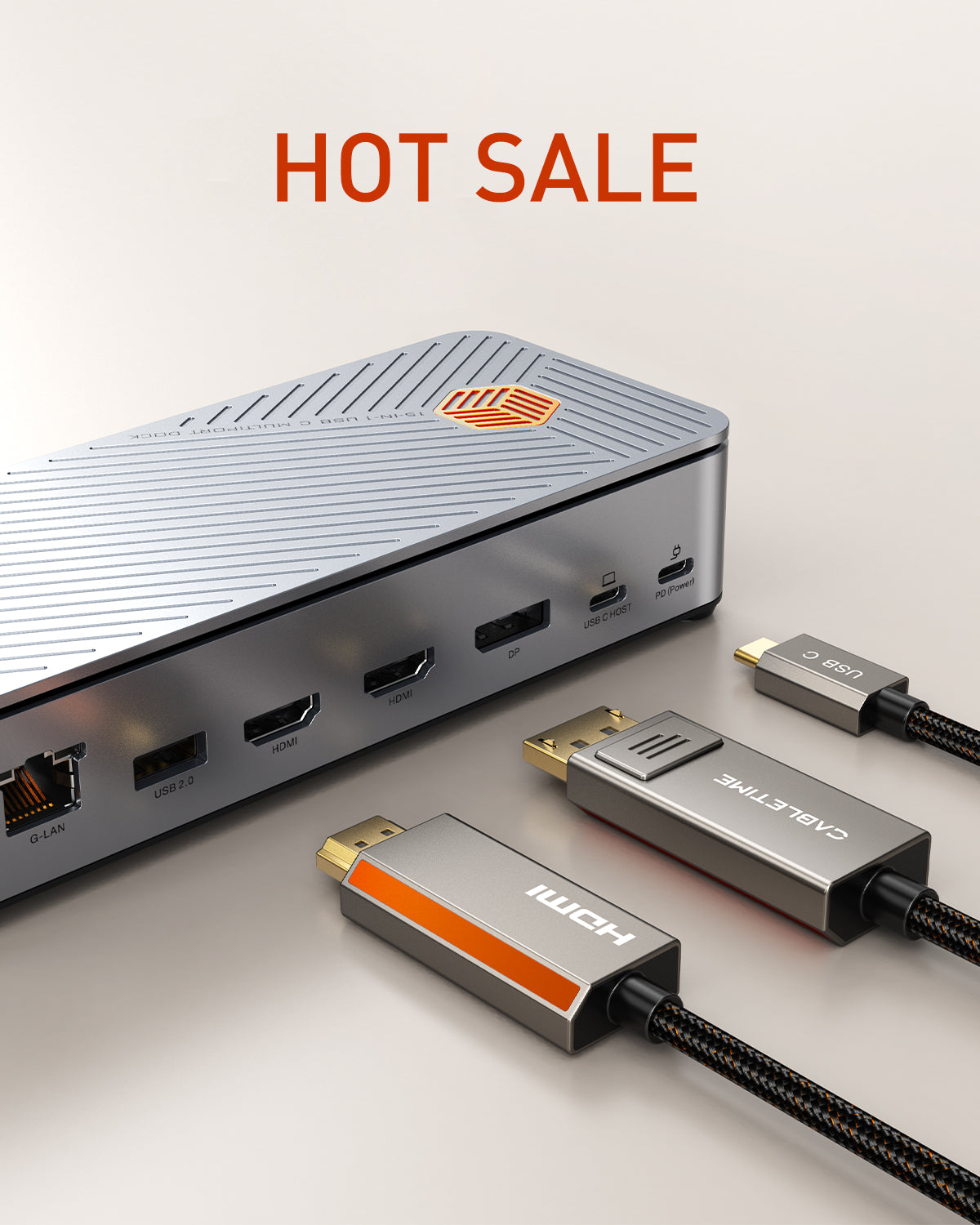
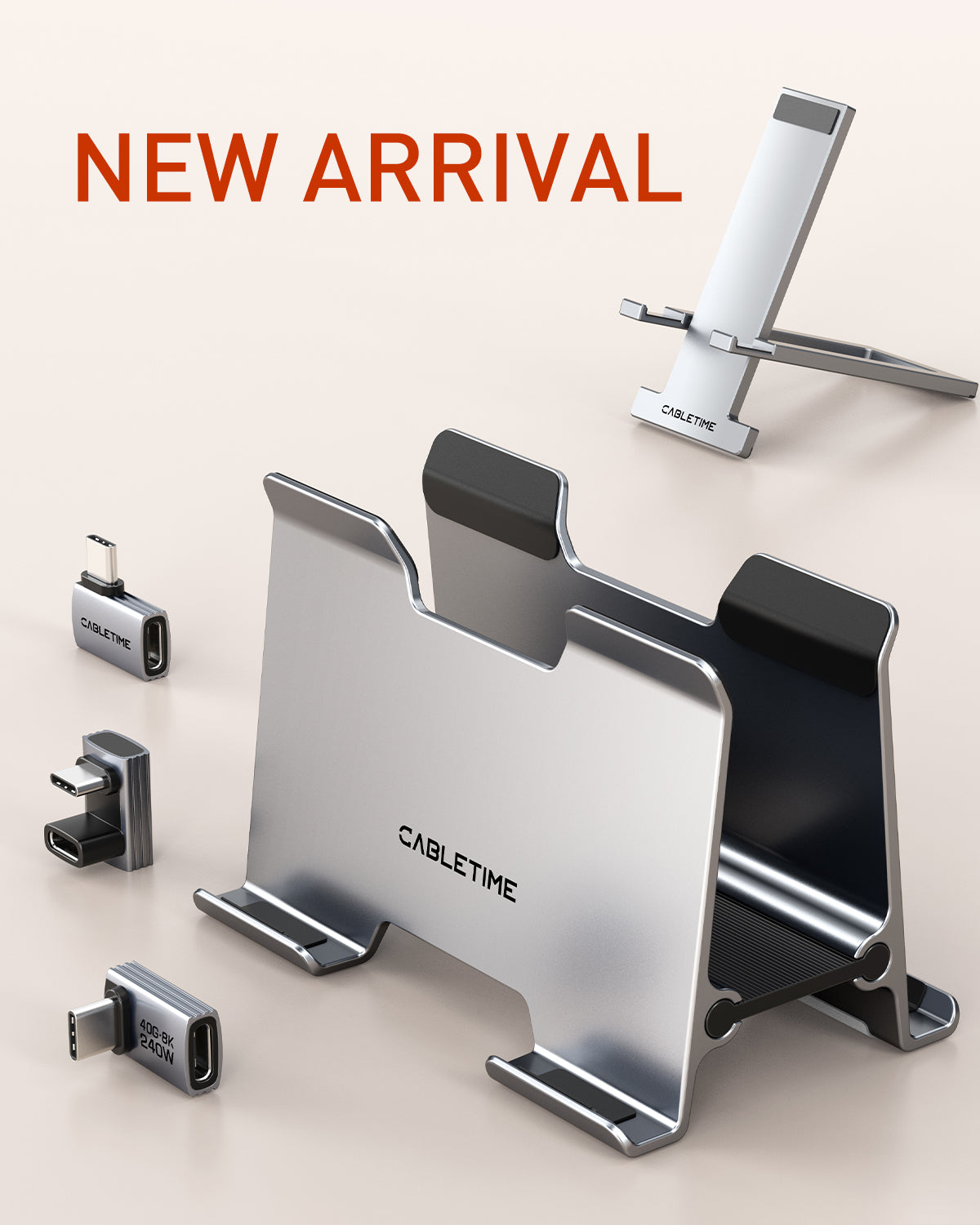
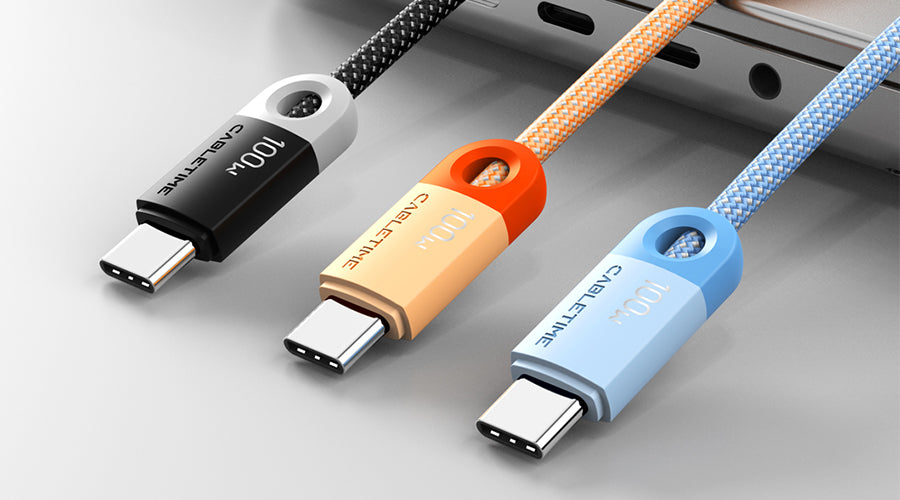
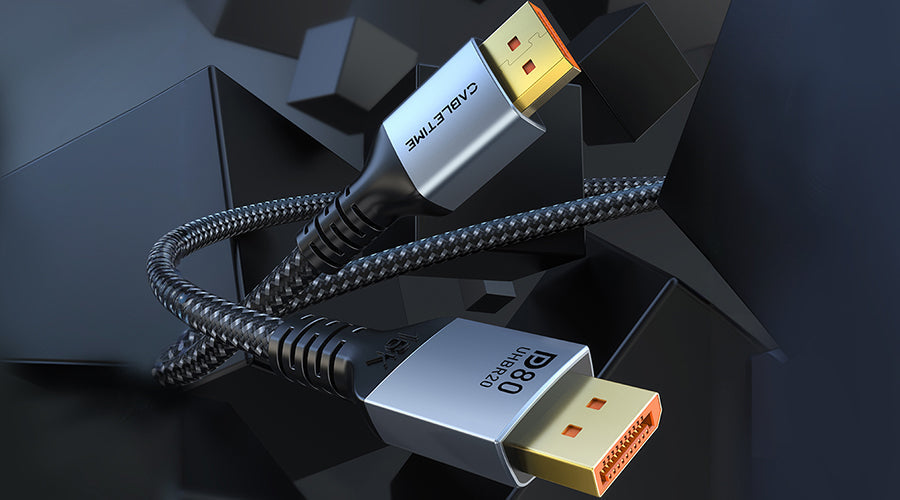
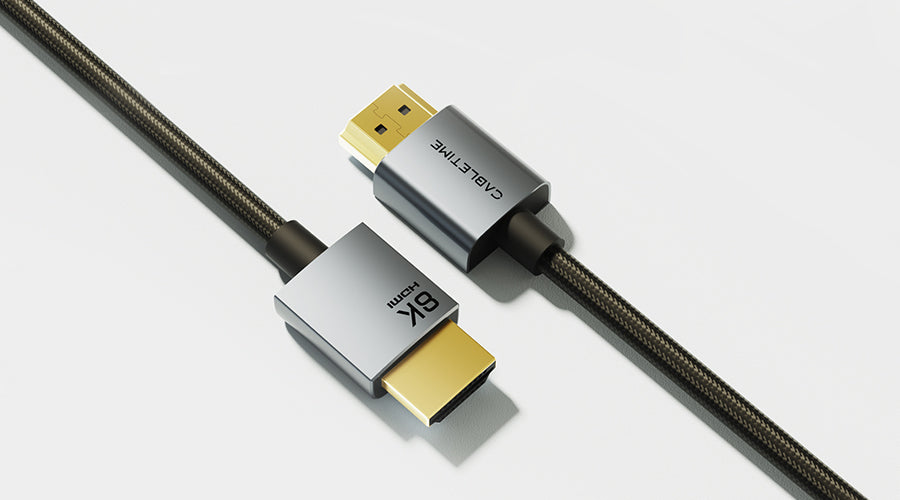
1 コメント
kathryn buckley cowan
Hello,
I’m trying to replace charging cable for a sharper image massager. it says: plus USB-C charging cable into USB-C adapter. Can you help me ideintify what I might purchase from you?
thanks much, Kathryn
コメントを書く
このサイトはhCaptchaによって保護されており、hCaptchaプライバシーポリシーおよび利用規約が適用されます。